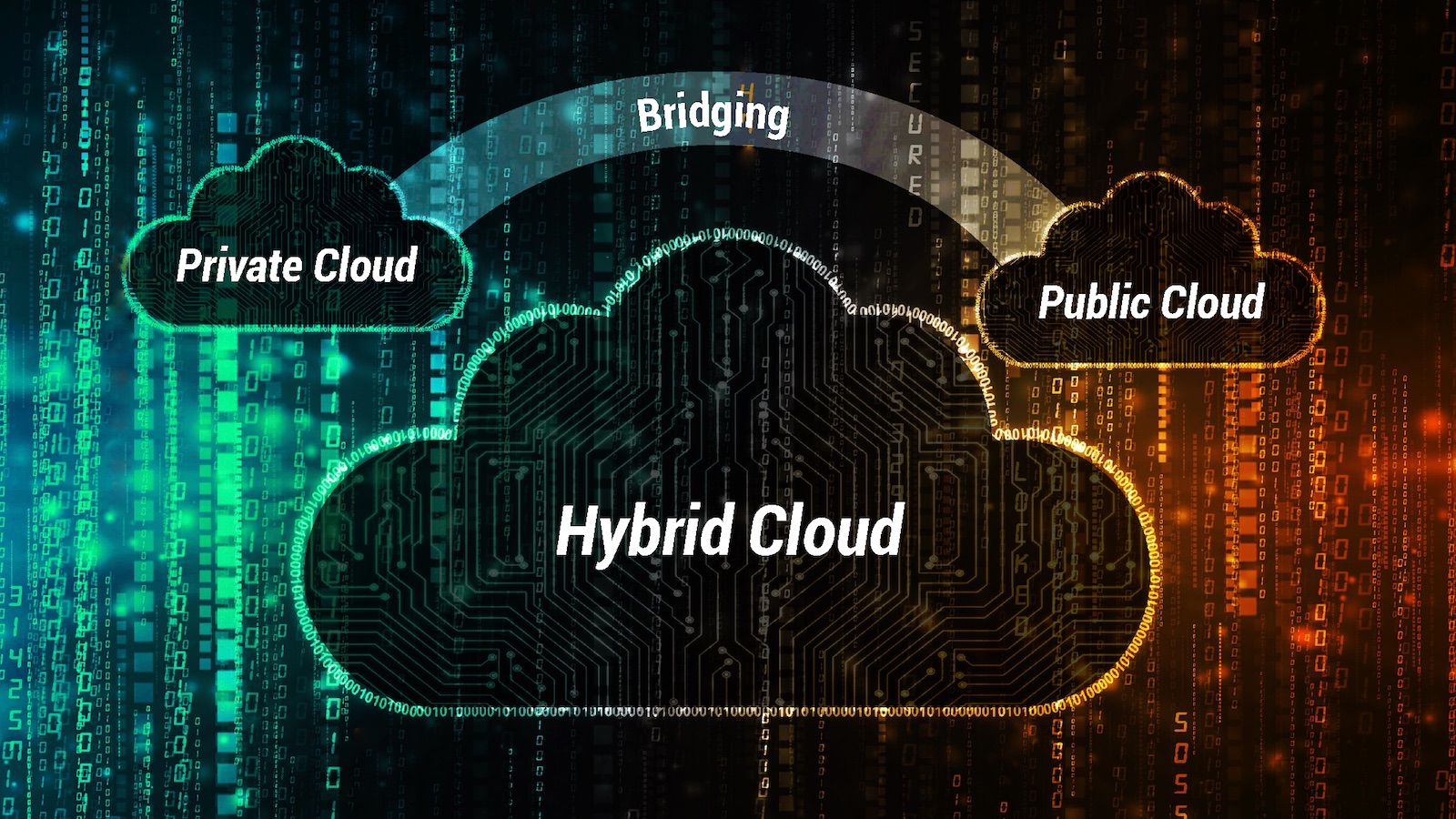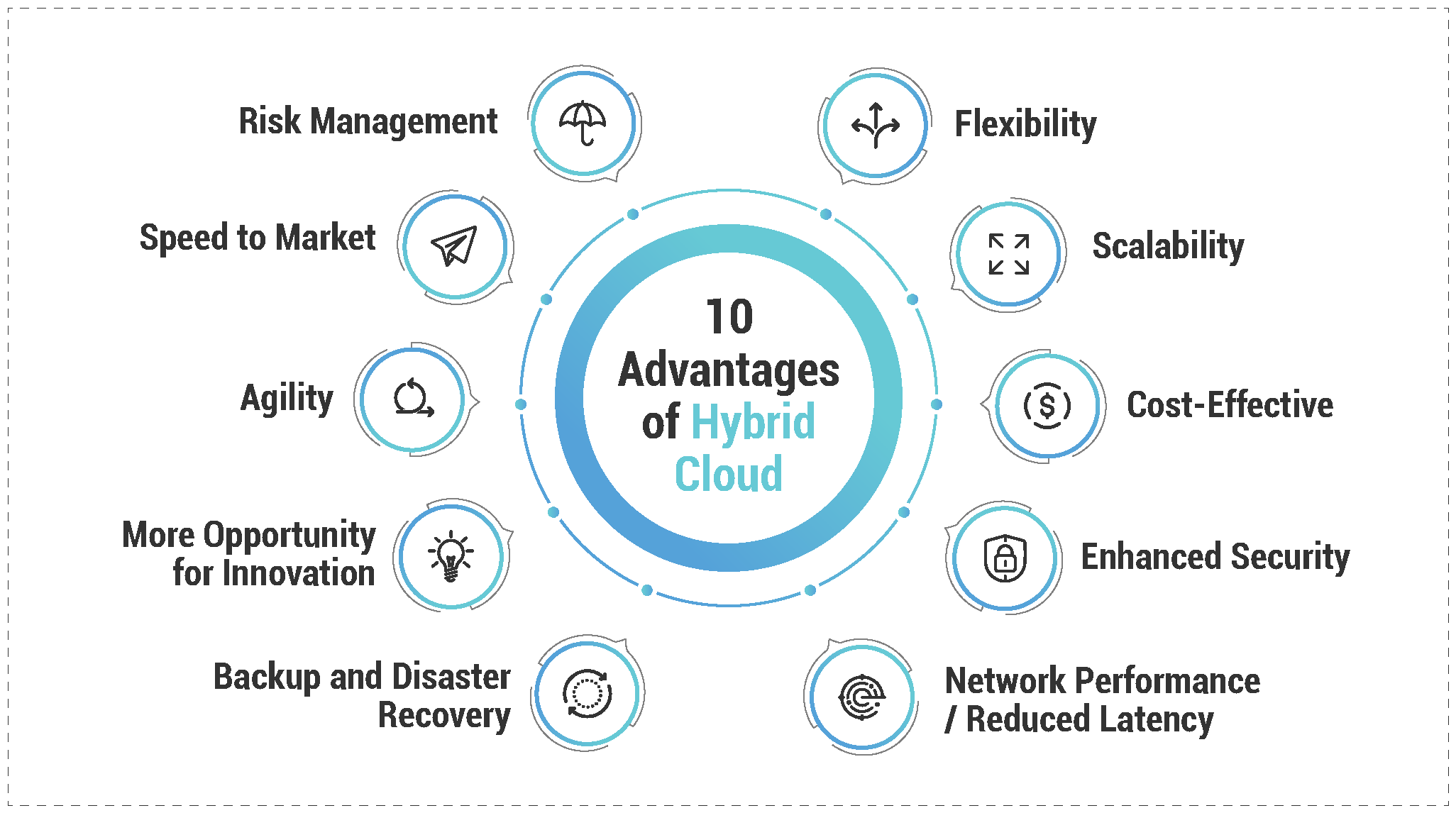
Most people are familiar with the term hybrid; although it is usually in relation to cars. Fortunately for the sake of my point, it will do just fine. Now, by definition, a hybrid is the result of something new being made by combining two different elements, and in the case of hybrid cars, it is an electric and gasoline-powered engine. This provides the user with the fuel efficiency of an electric motor with the power and convenience of a gasoline one. However, it isn’t only cars that are enjoying the benefits of combining two different elements to create something new and better, for the world of IT has constantly been melding together concepts, principles, and methodologies in order to have the best of both worlds. Today, we are going to dive into one of those combinations known aptly as the Hybrid Cloud.
What is a Hybrid Cloud Strategy?
According to the National Institute of Standards and Technology, a hybrid cloud infrastructure is a composition of two or more clouds (private, community, or public) that remain unique entities but are bound together by standardized or proprietary technology that enables data and application portability. Inferring from this definition, a hybrid cloud strategy is the use of these multiple infrastructures, including an organizations’ own on-premise IT and data centres, to achieve IT goals. When you allow workloads to transition between public and private clouds as needs and costs change, a hybrid cloud model can empower organizations with enhanced flexibility and more data deployment options. So whereas a
cloud-first strategy prioritizes the cloud for all IT functions, a hybrid strategy uses a combination of infrastructures to provide an organization with the benefits of each without limiting themselves through adherence to one.
Benefits of a Hybrid Cloud Strategy
Gartner estimates that 90 percent of organizations will have adopted a hybrid strategy by 2020, and when you look at the benefits, it is easy to see why. Both public and on-premise deployment boast their own unique advantages; however, they also come with their own drawbacks. That is until you combine them.
Simply put, a hybrid cloud strategy is ideal for organizations of all sizes who prioritize security, are positioned for growth, and who have high data demands, mainly because it addresses all these factors and more. Here are a few of the advantages of a hybrid cloud business strategy:

10 advantages of hybrid cloud.
flexibility, scalability, cost-effective, enhanced security, network performance/reduced latency, backup and disaster recovery, more opportunity for innovation, agility, speed to market, risk management.
A hybrid cloud strategy is also incredibly useful for organizations who work with dynamic or changing workloads. Take for example an order entry system, one that sees a spike in demand around the holiday season. This situation would be a prime candidate for a hybrid approach as they could have the application running in a private cloud, but can utilize cloud bursting from a public cloud during times of peak demand.
How to Build a Hybrid Cloud Strategy
One of the greatest benefits of adopting a hybrid cloud strategy is that you can customize it to the needs, present and future, of your organization. In other words, there isn’t just one type of hybrid cloud; rather, there are multiple approaches and combinations. However, in order to establish a hybrid cloud strategy, the following requirements must be available:
- A public Infrastructure as a Service (IaaS) platform
- Creation of a private cloud, either on-premise or via a hosted private cloud provider
- Sufficient Wide Area Network (WAN) connectivity between environments
- Private clouds must be properly architected to attain compatibility with public cloud
Now that I’ve established the prerequisites for hybrid implementation, it begs the question as to what exactly it would look like – and there isn’t one answer. One option is an organization could invest in cloud management software, providing them with a single platform from which to manage public cloud applications and on-premise infrastructure. Another option is the vendor-native hybrid cloud strategy, where you take your on-premises infrastructure or data centre and connect it to the public cloud in order to leverage its benefits.
Regardless of your approach, the beauty of a hybrid strategy is that it allows organizations to tailor their infrastructure to meet their specific needs. However, like most things in life, there are steps you can take to help ensure your hybrid cloud initiative gets off to a good start:
- Integrate new cloud services with existing on-premise infrastructure so you can have access to all necessary applications
- Implement security measures to control and restrict the flow of vital data
- Use a virtualization layer, or hypervisor, to deploy existing applications in such a way that it works seamlessly on-premise and on the cloud platform. This will provide an easier approach to lift and shift between cloud and on-premise infrastructures
- When possible, develop future applications using container technology tools which can reduce dependence on cloud platform vendors and allow you to use on-premise and different cloud platforms in unison
- Automate tasks whenever and wherever possible, especially repetitive manual ones
- Develop and monitor KPIs (deployment frequency and speed, failure rate, time-to-recovery) so as to ensure a winning strategy using the hybrid cloud model
The key to constructing a successful hybrid cloud is found in the selection of hypervisor and cloud software layers that are uniquely compatible with your desired public cloud. This allows for proper interoperability with said public clouds API and promotes seamless migration between the two.
Hybrid Cloud Implementation: Challenges and Solutions
As is true when implementing any new strategy or practice, challenges can often arise. However, being informed, and more so prepared, for these occurrences is the best way to ensure a smooth transition to utilizing a hybrid model. Here are some common hurdles and helpful tips to work through them:
- Security Risks – Data in a private cloud is secured, however, a hybrid cloud may require different security platforms to safeguard sensitive data. By selecting the right platform, developing a deep understanding of the data requirements, and with the right partnership in integrating your network solution, security risks can be minimized.
- Integration and Maintenance Cost – Integration of public cloud with private cloud, on-premise infrastructure, or integration with various cloud providers can prove challenging. It adds a greater complexity from not only the management and implementation point of view, but it can also make tracking resources and computing power across multiple environments difficult.
- Technology and DevOps Process – A hybrid cloud strategy requires greater prudence in selecting technology and solutions which can work across a variety of environments. When this isn’t accounted for, all too often I see lifecycle management and deployment slow down. However, turning to an expert in your rollout can help provide the best possible solutions and technologies such as containerization using Docker/Kubernetes/Openshift and automate application build and deployments by ensuring proper CI/CD process is implemented. Among the most popular technologies in the field right now include Microsoft Azure, Google Cloud Platform, HPE OneSphere, and Amazon Web Services through their recent partnership with VMware software.
Hybrid cloud strategy is the way of the future for any organization that’s looking for flexibility, affordability, enhanced security, improved access and communication, and customizable solutions for IT needs. However, like any new strategy, this can be intimidating when experience is lacking. Don’t hesitate in reaching out to an expert to help develop and implement a hybrid cloud solution that isn’t only tailored to your specific requirements, but is designed to drive your business forward.



